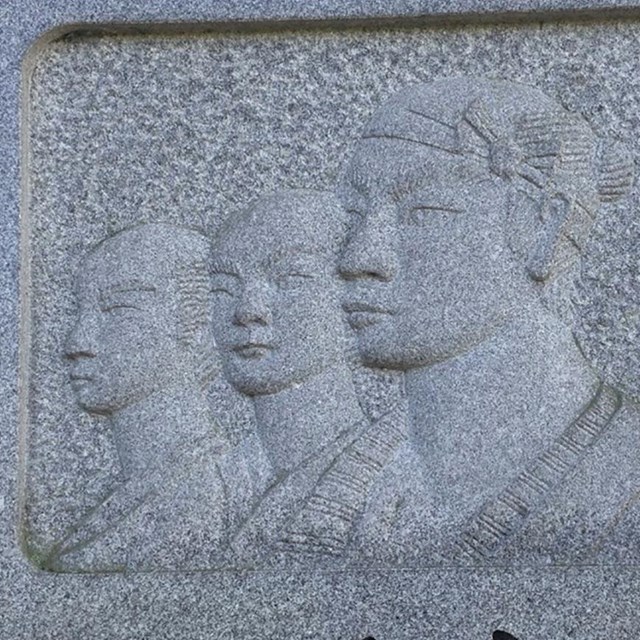Last updated: May 28, 2024
Article
Asian American History at Fort Vancouver National Historic Site
In the 19th century, sweet pickled ginger and tea was brought from China to Fort Vancouver, carried across the Pacific Ocean on tall ships. The Spode dishes that were used by everyone from the fort's Chief Factor to laborers living in the nearby employee village may have been made in England, but bore patterns that were inspired by Asian art.
Later, after the fort was abandoned by its British inhabitants and the area became the U.S. Army's Vancouver Barracks, teawares made in Japan were used by the post's officers, and Chinese immigrants worked at the barracks, often as cooks. In the 1880s, ten Chinese immigrants worked at Vancouver Barracks. In 1886, soldiers from Vancouver Barracks under the command of Brigadier General John Gibbon were dispatched to Seattle to protect Chinese immigrants who were under attack from racist and xenophobic mobs. Asian Americans also served as soldiers at Vancouver Barracks, like Private Kensichi Hayashi, a Japanese-American soldier who served in the 28th Spruce Squadron at the post during World War I.
Below, find stories from Asian Americans who visited, lived in, or worked at Fort Vancouver and Vancouver Barracks.
-
 Japanese Castaways
Japanese CastawaysIn the early 1830s, three castaway Japanese sailors arrived at the Hudson's Bay Company's Fort Vancouver.
-
 Leah Hing
Leah HingLeah Hing was the first Chinese American woman to earn a pilot's license.
-
 Louis Lee
Louis LeeLouis Lee was the official photographer of the Vancouver Kaiser Shipyards during World War II.
-
 Chinese Workers
Chinese WorkersIn the 1880s, Chinese men worked in the homes along Officers' Row at Vancouver Barracks.
-
 Japanese American Soldiers
Japanese American SoldiersDiscover the stories of two Japanese American soldiers stationed at Vancouver Barracks in December, 1941.
